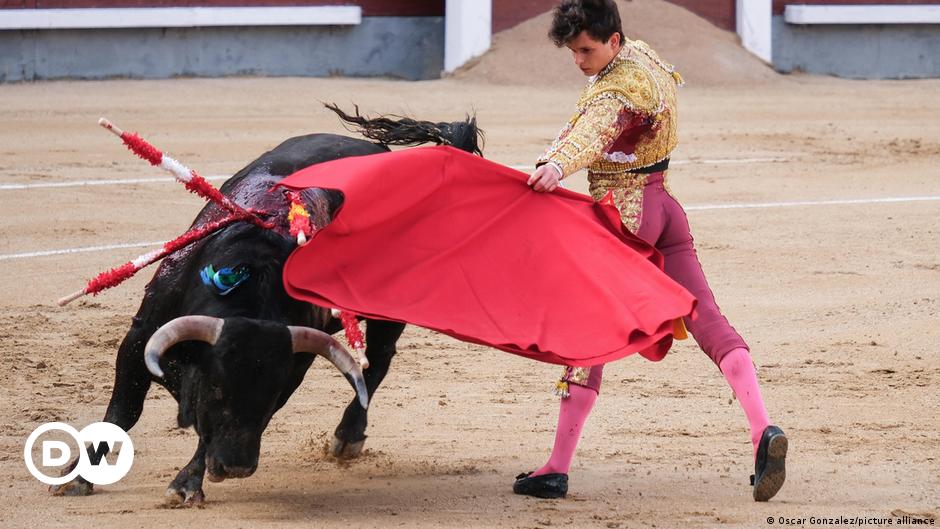Animals have been used by humans as a source of sporting entertainment for thousands of years, but ethical concerns and questions about their welfare are increasingly being voiced.
“Australia hosts a major horse race called the Melbourne Cup every year, and it has become increasingly controversial as almost every year we see horses fall, break legs and die in that race. ,” said philosophy lecturer Heather Browning. He focuses on animal welfare, ethics and awareness at the University of Southampton, UK.
Because the stakes are often high, some animals are drugged or whipped to induce the desired performance.
“There's a lot of money at stake, so it's clear that there are unscrupulous trainers and veterinarians who are willing to push these horses to their limits,” said Joanna Grossman, senior policy adviser at the American Institute for Animal Welfare. Stated.
animals can feel pain
There has long been intense debate over the amount of pain, suffering and fear animals experience, which Grossman said has made them “easier to exploit.”
However, in recent years, an interdisciplinary community studying animal sentience has emerged. The study of animals' ability to experience pleasure and pain.
“We're all very confident that mammals like dogs, horses, and primates feel pain just like we humans do. Their brains are structurally very similar to ours.” said Browning, adding that there is now broad consensus for birds as well. Fish are also sentient beings.
Strengthens ban on greyhound racing
Some popular sporting events based on animal performances have already been banned in countries around the world.
One such sport is dog racing, where greyhounds chase mechanical lures around a track. At times, the sport draws larger audiences than its more prominent rival, horse racing, and has been mainstream entertainment for decades.
However, recent scrutiny has come over the animals' isolation in kennels, their brutal training methods, and what happens to the dogs when they are no longer needed at the track.
“Many of the training methods used to ensure animal performance are very harsh and punitive. So what happens to the animals when they are not on display? That's the biggest concern for the welfare of the animals,” Browning said.
Dog racing is legal in only 10 countries around the world, four of which are in the United Kingdom (England, Scotland, Wales, and Northern Ireland).
Wildlife shows are becoming less popular
Traditional circus acts using animals such as elephants, tigers, giraffes and lions are also facing increasing backlash. The same goes for the use of dolphins and other marine animals in marine life shows.
“They are blatantly abused to make them do what their trainers want them to do. It's not something a wild, exotic animal that should be roaming freely outside would want to do on its own.” ,” Grossman said. “So to get them to do that, you may have to literally beat them into submission.”
The use of wild animals in circuses is prohibited in many countries around the world, including Bolivia, Costa Rica, India, and Iran. However, it is still legal in many European countries.
In 2021, one million European Union citizens called for a bloc-wide ban on the use of wild animals in major top shows. Studies have shown that almost 90% of animals rescued from European circuses suffered from behavioral problems, self-harm, or had physical problems as a result of practices such as declawing. I am.
France, an EU member state that used to have the highest number of wild animals used in circuses, has decided to ban wild animals from circuses from 2028.
But in Germany, it is still legal, even though polls show that 75% of Germans oppose showing wild animals in circuses. There is also growing awareness of how lions, bears and primates are transported across countries.
“There doesn't seem to be a way to house the animals in enclosures that are large enough and complex enough if you're going to move them all the time,” Browning said.
“There is no future in blood sports.”
Blood sports like bullfighting, where bulls and bullfighters face off in public, are also becoming more controversial than ever.
According to European animal welfare organization Humane Society International (HSI), around 250,000 bulls are killed each year in organized fights..
Grossman describes it as a “very violent, very cruel sport” rooted in brutality. “If the purpose is only to terrorize the poor animal and ultimately kill it, then to me it stands out as a very blatant example of unnecessary and unwarranted suffering. Masu.”
“But the good news is that we are seeing moves to ban blood sports in various jurisdictions and countries,” she added.
Bullfighting has already been outlawed in many countries where it was once popular, including Argentina, Canada, Cuba, Italy and the United Kingdom. Currently, this law is legal in only eight countries in the world, of which three in Europe are Spain, France, and Portugal.
And while Grossman says there will always be people who think blood sports should remain legal, he also sees “much more public interest in animal welfare.” .
Is there a way to involve animals in sports in a responsible way?
“How animals are raised and cared for plays a big role. Much of an animal's life is spent not performing its sport, and many animals are simply killed when they are no longer useful. That's why regulations around that are important,” Browning said. .
But just creating these laws is not enough. “We need to make sure that we have enough inspectors and that they are performing their duties regularly,” she added.
Social media also helps inform people about what's going on behind closed doors, Grossman said.
“We're showing the public footage of what's really going on,” she says. Browning agreed, adding that when people see animal abuse where it is happening, they may refuse to pay for it.
Editor: Sarah Steffen


